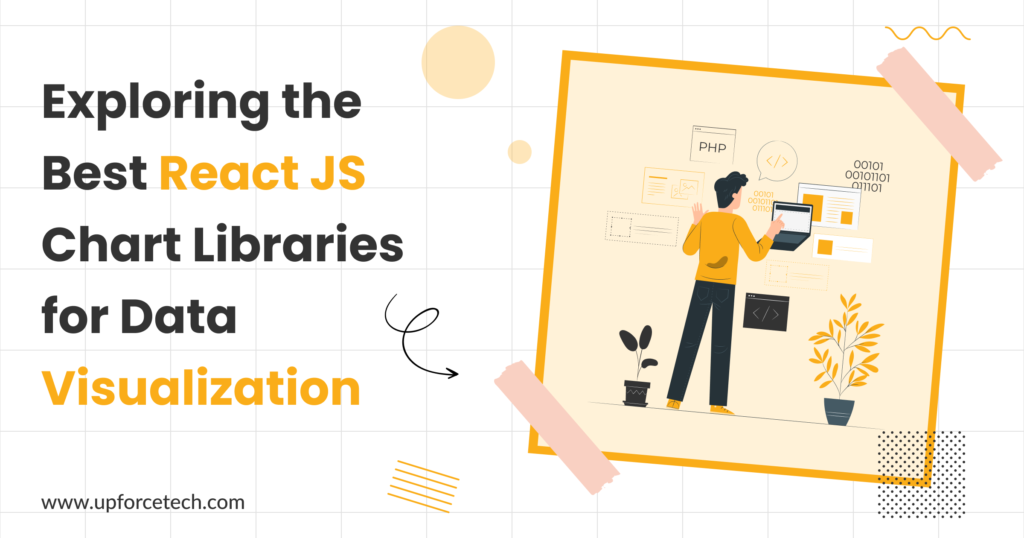Introduction to React JS and Data Visualization
Welcome to the exciting world of React JS and data visualization! In today’s digital age, where information is abundantly available, presenting complex data in a visually appealing and easily understandable manner has become crucial. This is where chart libraries for data visualization come into play.
Whether you are building a business intelligence dashboard, analyzing user behavior on your website, or simply wanting to create stunning visual representations of your data, React JS chart libraries can be the powerful tools you need. With their wide range of features and flexibility, these libraries make it easier than ever to incorporate beautiful charts into your React applications.
In this blog post, we will dive deep into the best React JS chart libraries available in the market. We’ll explore their unique features and benefits that can enhance your data visualization efforts. Additionally, we’ll provide case studies showcasing real-world examples of how these chart libraries have been successfully implemented.
So, whether you’re a seasoned developer looking for new tools or just starting on your coding journey with React JS, join us as we unravel the wonders of these amazing chart libraries. Let’s discover how they can revolutionize the way you present and interpret data in your projects!
The Importance of Using Chart Libraries for Data Visualization
Data visualization plays a crucial role in understanding and analyzing complex datasets. It allows us to present information in a visually appealing and meaningful way, making it easier for users to comprehend and derive insights from the data. In the world of web development, React JS has emerged as one of the most popular frameworks for building interactive user interfaces.
When it comes to incorporating charts into React JS applications, using chart libraries is essential. These libraries provide pre-built components and functionalities that simplify the process of creating beautiful and interactive charts. They offer a wide range of chart types, such as line charts, bar charts, pie charts, and more.
One major advantage of using chart libraries is their ability to handle large amounts of data effortlessly. They are designed with performance optimizations in mind, ensuring smooth rendering even with thousands or millions of data points. This makes them ideal for applications dealing with real-time data updates or displaying historical trends.
Another benefit is the customization options provided by these libraries. Developers can easily style and configure various aspects of the charts, like colors, labels, tooltips, legends, animations, etc., allowing them to align with the overall design language of their application.
Chart libraries also offer interactivity features like zooming, panning, and tooltips, which enhance user experience by enabling deeper exploration and analysis of data points on-the-fly.
Furthermore, because chart libraries are well-maintained open-source projects supported by active developer communities, they often receive regular updates, new features, and bug fixes. This ensures stability, reliability, and compatibility across different browser environments.
In conclusion, the importance of using chart libraries for data visualization in ReactJScann cannot be emphasized enough.
These powerful tools can save time and effort by providing pre-built components and functionalities that make creating charts easier.
Their customization options and leading-edge features enhance user experience while their performance optimizations ensure efficient rendering even with l
large datasets.
Choosingtherightchartlibrarycanbeacriticaldecisionthatcanimpacttheproject’ssuccessanddeliveroptimaldatavisualization
Top React JS Chart Libraries: Features and Benefits
React JS is a popular JavaScript library that allows developers to build interactive user interfaces. When it comes to data visualization, React JS chart libraries play a crucial role in displaying complex data in an understandable and visually appealing way. Let’s explore some of the top React JS chart libraries and their features.
One of the most widely used chart libraries for React JS is Chart.js. It offers a wide range of customizable charts, including line, bar, pie, radar, and more. With its simple API and extensive documentation, developers can easily create stunning visualizations.
Another powerful option is Recharts, which provides a set of composable components for creating dynamic charts. It supports various types of charts like line, area, scatter plots, and even customized ones.
For those looking for advanced functionalities like 3D visualizations or real-time updates, Viser.js is worth considering. This library leverages both React and D3 to offer high-performance charts with smooth animations.
If you prefer declarative syntax similar to the CSS-in-JS approach, then Victory could be your choice. It focuses on providing intuitive APIs with comprehensive documentation, making it easier even for beginners.
Plotly.js stands out as a versatile charting library offering highly interactive graphs suitable for scientific data analysis or business intelligence applications.
Each library has its own unique set of features and benefits that cater to different project requirements. Whether you need simplicity or advanced capabilities, there’s a React JS chart library available that fits your needs!

Comparison of Popular React JS Chart Libraries
Comparison of Popular React JS Chart Libraries
When it comes to data visualization in React JS applications, there are several chart libraries available that can help you present your data in a visually appealing and interactive way. Let’s take a look at some of the most popular ones and compare their features.
1. Recharts: This is a widely used chart library for React JS that offers a wide range of customizable charts such as line, bar, pie, and area charts. It provides an extensive set of options for styling and animating the charts, making them highly engaging for users.
2. Victory: Victory is another powerful charting library that focuses on providing declarative components for building complex charts. It offers various types of charts like scatter plots, histograms, and heat maps with easy-to-use APIs.
3. Nivo: Nivo stands out among other React JS chart libraries due to its rich collection of 30+ customizable charts and graph types. It also supports responsive design and provides advanced features like legends, tooltips, and animations.
4. Chart.js: Although not specifically built for React JS, Chart.js can be easily integrated into any React application using wrappers or custom components. It offers beautiful and interactive charts with support for multiple datasets.
5.React-vis: Developed by Uber Technologies Inc., react-vis is a lightweight yet powerful charting library designed specifically for use with React applications. With its modular architecture, it allows developers to create complex visualizations effortlessly.
Each of these libraries has its own unique set of features that cater to different project requirements. Depending on your specific needs, such as the type of data you want to visualize or the level of customization required, you can choose the one that best fits your project goals.
While Recharts might be suitable if you need extensive customization options and animation effects, Victory could be more appropriate if you prefer declarative syntax when creating complex visualizations.
Meanwhile,
Nivo may appeal to those who require a wide variety of chart types and advanced features like legends and tooltips. On the
How to Choose the Right Chart Library for Your Project
Choosing the right chart library for your React JS project can be a daunting task, given the abundance of options available. However, by considering a few key factors, you can make an informed decision that aligns with your project’s requirements and goals.
First and foremost, consider the specific type of data visualization you need to create. Different chart libraries excel in different areas, such as line charts, bar charts, pie charts, or more complex visualizations like heat maps or network graphs. Assessing your data visualization needs will help narrow down the choices.
Next, evaluate the features and customization options offered by each chart library. Look for libraries that provide a wide range of customizable components and styling options so that you can tailor the visuals to match your project’s branding or design guidelines.
Consider also the performance and scalability of the chart library. If your application deals with large datasets or requires real-time updates, choose a library that is optimized for handling these scenarios efficiently.
Another crucial factor to consider is community support and documentation. A well-established library with an active community ensures ongoing development and support in case you encounter any issues during implementation.
Take into account any budget constraints or licensing considerations when choosing a chart library. Some libraries may require purchasing commercial licenses for certain use cases, while others offer open-source alternatives without any restrictions on usage.
By carefully evaluating these factors based on your project’s requirements and constraints, you can select a React JS chart library that best suits your needs – enabling you to create stunning data visualizations effortlessly!
Tips for Implementing Charts in React JS Applications
When it comes to implementing charts in React JS applications, there are a few tips that can help you ensure a smooth and successful integration.
It’s important to choose the right chart library for your project. Consider factors such as the types of charts available, customization options, ease of use, and community support. Some popular options include Recharts, Chart.js, Victory Charts, and ApexCharts.
Once you’ve chosen a chart library, make sure to familiarize yourself with its documentation. Understanding how to properly configure and utilize the library will save you time and frustration down the road.
When working with data visualization in React JS applications, it’s crucial to structure your data properly. Ensure that your data is clean and organized so that the chart library can easily consume it.
Furthermore, consider incorporating interactivity into your charts. Users appreciate being able to interact with visualizations by hovering over data points or zooming in on specific areas. This can enhance user engagement and provide valuable insights.
Another tip is to optimize performance by avoiding unnecessary re-rendering of charts when possible. Utilize techniques such as memoization or shouldComponentUpdate methods provided by ReactJS to prevent unnecessary updates.
Thoroughly test your charts across different devices and screen sizes. Responsive design is key in ensuring that your charts look great on various platforms.
By following these tips when implementing charts in React JS applications, you’ll be well-equipped to create visually stunning and interactive visualizations that effectively convey information.

Case Studies: Real-World Examples of React JS Charts in Action
Let’s dive into some real-world examples that showcase the power and versatility of React JS chart libraries for data visualization. These case studies demonstrate how businesses across various industries have leveraged these tools to make sense of complex data and gain valuable insights.
One notable case study comes from a leading e-commerce company. They implemented a React JS chart library to visualize their sales data, allowing them to track revenue trends, identify top-selling products, and optimize their marketing strategies. With interactive charts displaying key metrics like customer acquisition costs and average order value, they were able to make data-driven decisions that significantly improved their bottom line.
In the healthcare sector, another organization used a React JS chart library to create visualizations of patient records. By presenting medical information in an easily understandable format, doctors were able to quickly analyze trends and patterns in patient health outcomes. This led to more accurate diagnoses and personalized treatment plans for better patient care.
A travel agency utilized a React JS chart library to visualize booking data from different destinations around the world. The interactive nature of the charts allowed them to explore customer preferences for specific locations and tailor their marketing campaigns accordingly. As a result, they saw an increase in bookings for targeted destinations while reducing efforts on less popular ones.
In the financial industry, a banking institution implemented React JS charts as part of its reporting system. Executives could easily view essential financial metrics such as transaction volumes, account balances, and loan portfolios through visually appealing dashboards created with these libraries. This empowered decision-makers with actionable insights, leading to more informed business strategies.
These are just a few examples highlighting how React JS chart libraries have transformed data visualization across diverse sectors. Whether it’s optimizing sales strategies or enhancing healthcare outcomes, these powerful tools enable businesses to unlock hidden patterns within their datasets efficiently.
By leveraging intuitive visual representations provided by these libraries combined with the flexibility offered by the React JS framework, organizations can harness the power of data to drive innovation and make better-informed
Conclusion
Choosing the right chart library for your React JS project can greatly enhance the data visualization capabilities of your application. By utilizing these powerful tools, you can create stunning and interactive charts that effectively communicate complex information to your users.
In this article, we explored some of the best React JS chart libraries available in the market today. We discussed their features and benefits, compared them based on various factors, and provided tips for implementing charts in React JS applications.
From our analysis, it is clear that each chart library has its strengths and weaknesses. It ultimately depends on your specific requirements and preferences when selecting a chart library for your project.
Whether you need simple line charts or advanced 3D visualizations, there are plenty of options to choose from. Some popular choices include Chart.js, Victory Charts, Recharts, FusionCharts Suite XT, and ApexCharts.
When making a decision, consider factors such as ease of use, customization options, performance considerations, documentation quality, community support availability of features like interactivity and animation.
Remember to also take into account future scalability needs so that you can ensure compatibility with new technologies or frameworks down the road.
By carefully evaluating these aspects and conducting thorough research before integrating a chart library into your React JS application’s development process, you will be well-equipped to make an informed choice that aligns with both your current needs and future growth plans.
So go ahead! Dive into the world of React JS chart libraries and unleash the power of data visualization within your applications!

